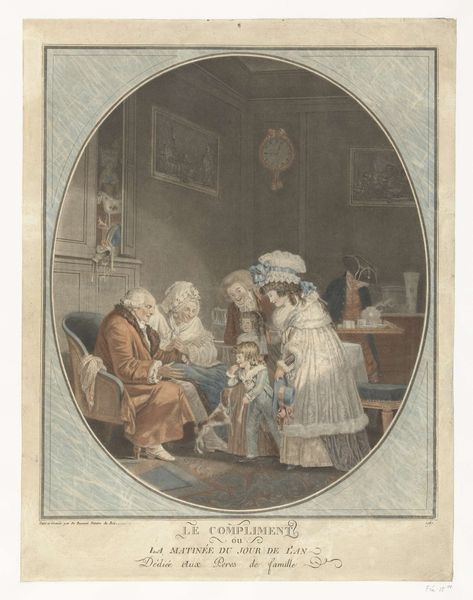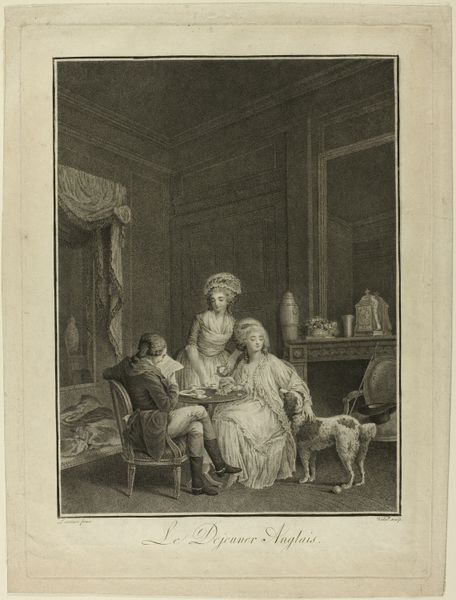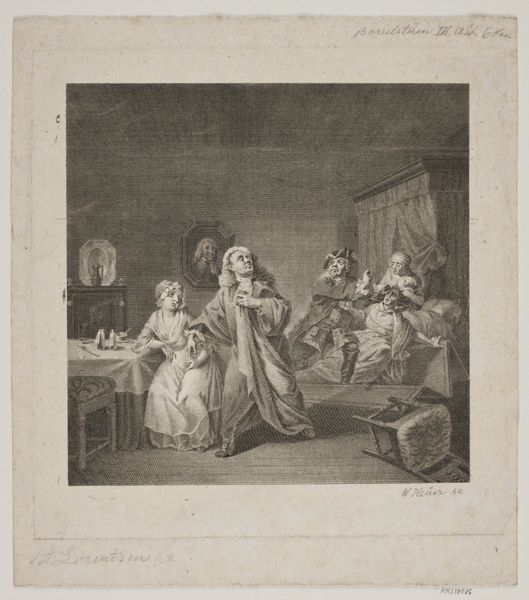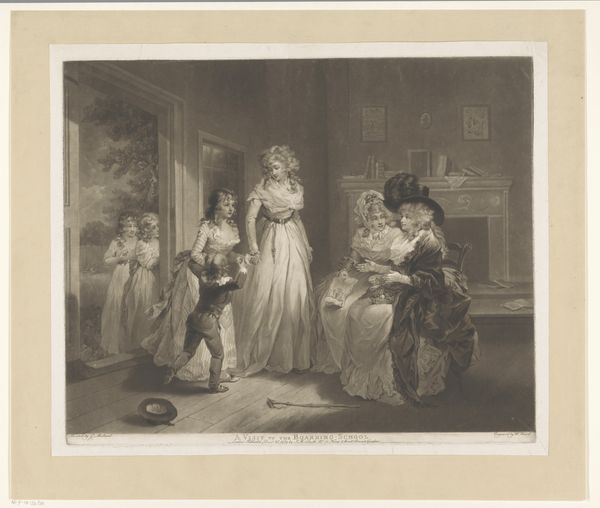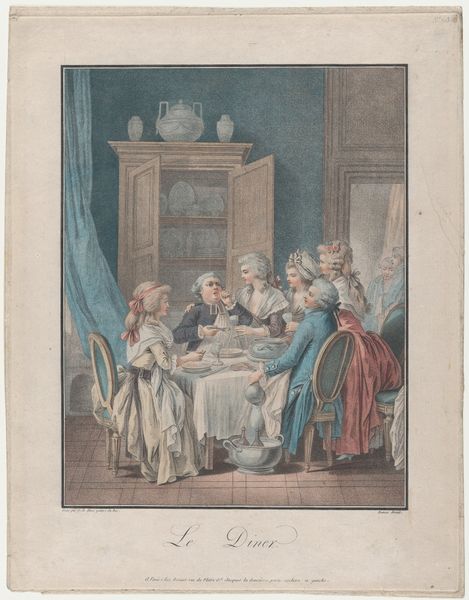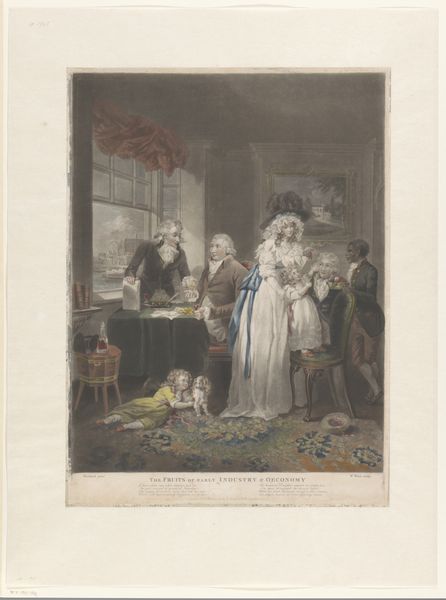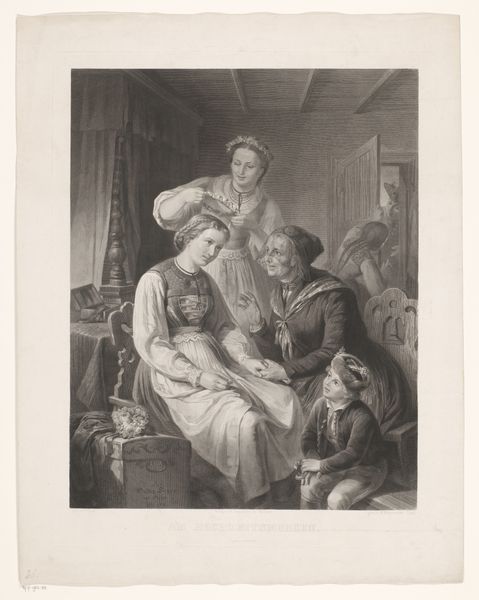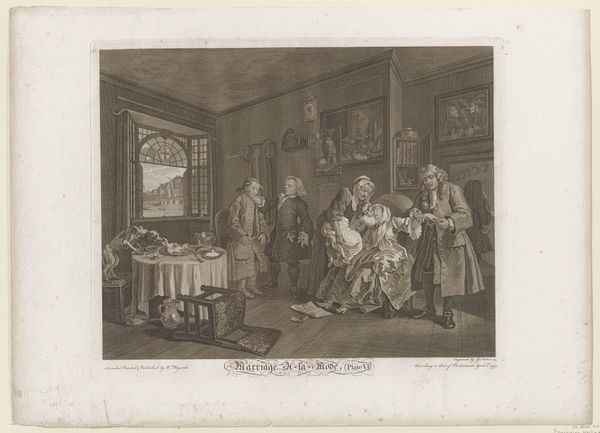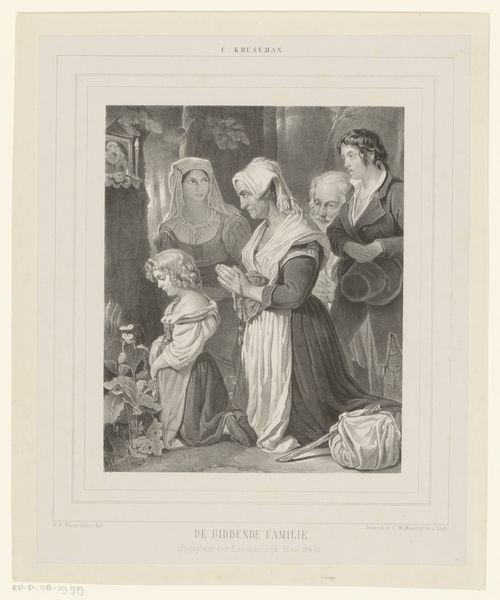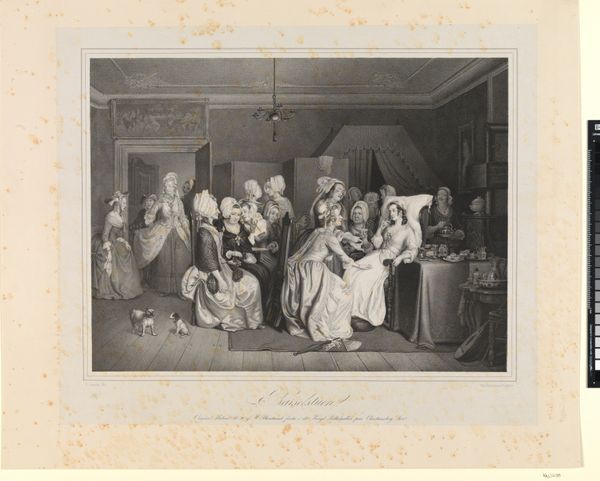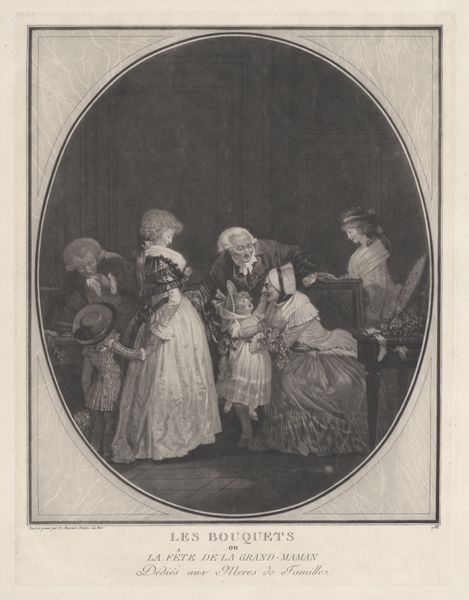
Le Compliment ou La Matinée du jour de l'an (The Compliment or New Year's Morning) 1787
0:00
0:00
Dimensions: Overall (outer framing line): 30 x 25.1 cm (11 13/16 x 9 7/8 in.) sheet (trimmed at or just within platemark): 36.7 x 28.6 cm (14 7/16 x 11 1/4 in.)
Copyright: National Gallery of Art: CC0 1.0
Editor: This is "Le Compliment ou La Matinée du jour de l'an," or "The Compliment or New Year's Morning," a print by Louis Philibert Debucourt from 1787. There's a definite sense of bourgeois domesticity, but also hints of something else. How do you interpret this work? Curator: It’s fascinating, isn’t it? Debucourt offers us a glimpse into the intimate rituals of the French bourgeoisie on New Year's Day. However, what appears as a charming scene of familial affection is actually a window into the performative nature of class and gender roles during this era. What do you notice about the clothing, the setting, the gestures? Editor: Well, everyone is very well-dressed. The space looks neat and tidy. They almost seem a little stiff and formal to me, not relaxed. Curator: Precisely! Debucourt is very deliberately depicting the strict codes of conduct inherent to the bourgeois. Consider how gender operates here: The women, adorned in finery, seem to almost parade, while the older man seated clearly commands attention. This tableau isn't merely a portrait of familial love; it reveals how social hierarchies were reinforced through daily practices. What does that suggest to you about the broader historical context? Editor: I guess it wasn't just about how people felt about each other but also about presenting a certain image to the world and maintaining a social order. Curator: Absolutely. By paying close attention to the details – the clothes, the poses, even the interior decoration – we begin to question whose stories are being told and whose are being omitted in the historical record. Editor: So it’s about seeing beyond the surface of the image and understanding the power dynamics at play? Curator: Precisely. We must critically examine visual culture as historical evidence, questioning what the image shows and, more importantly, what it conceals. Editor: That really changes how I see this image. Thanks for making me think critically about what is being shown in the artwork. Curator: My pleasure. Hopefully, our viewers now have a better lens through which to see the artwork.
Comments
No comments
Be the first to comment and join the conversation on the ultimate creative platform.
